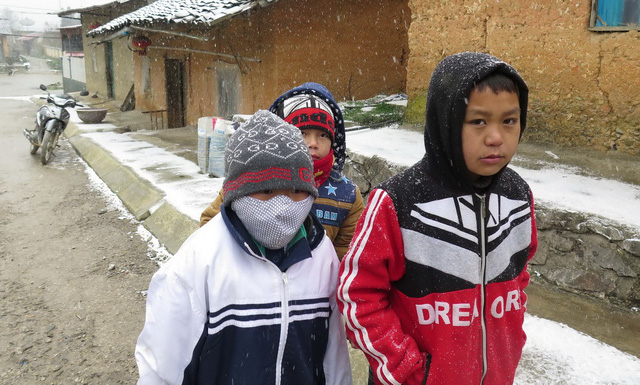Temperatures in northern Vietnam are set to continue plunging from Saturday through Wednesday next week, as the worst cold front of the season maintains its impact on the region.
The days-long chill will blanket the northern and north-central regions from December 16 to 20, whereas the mountainous areas will suffer from biting cold.
No rain is in the forecast for the northern region in the next few days, with temperatures expected to dip to 8-11 degrees Celsius in the low land, and 4-7 degrees Celsius in mountainous areas. The most remote mountainous areas will see readings drop to below 3 degrees Celsius and may experience frosts.
The lowest temperatures during this cold spell in Hanoi are forecast at 9-12 degrees Celsius.
The north-central and mid-central regions will suffer from rain and heavy downpours, while the northern and central areas of the East Vietnam Sea, including Vietnam’s Hoang Sa (Paracel) archipelago, will experience rough seas.
Complicated typhoon Kai-tak
In the meantime, tropical storm Kai-tak, which formed off central Philippines on Thursday, is approaching the East Vietnam Sea with complicated development.
As of 7:00 am on Saturday, the storm center was located 110km east of central Philippines, packing winds of up to 75kph.
The typhoon is moving west in the next 24-hour period, at a speed of 10-15kph.
Southern Vietnam and the Malay Peninsula are being put on alert for potential impacts from storm Kai-tak later next week after it finishes lashing the Philippines, AccuWeather reported late Friday.
Kai-tak is expected to be either a minimal tropical storm or depression when it emerges from the Philippines into the East Vietnam Sea, according to AccuWeather.
 |
| The development of typhoon Kai-tak |
Kai-tak may be a strong tropical storm as it makes its closest approach to southern Vietnam during the second half of next week, AccuWeather reported, adding that the strength and exact track of Kai-tak will determine the impacts southern Vietnam will face.
“Even if Kai-tak passes south of Vietnam, moisture from the storm still may cause localized downpours to raise the risk of flooding and mudslides along the coast,” the weather website warned.
“The risk for flooding and damaging winds will increase if the center of Kai-tak barrels into or grazes southern Vietnam.”
Vietnam has been hit by 14 storms so far this year, with the latest typhoon losing its strength into a tropical depression on November 19.
If the typhoon does not make landfall in southern Vietnam, it will increase the risks for flooding and mudslides across southern Thailand and northern Malaysia, according to AccuWeather.
Like us on Facebook or follow us on Twitter to get the latest news about Vietnam!



















































